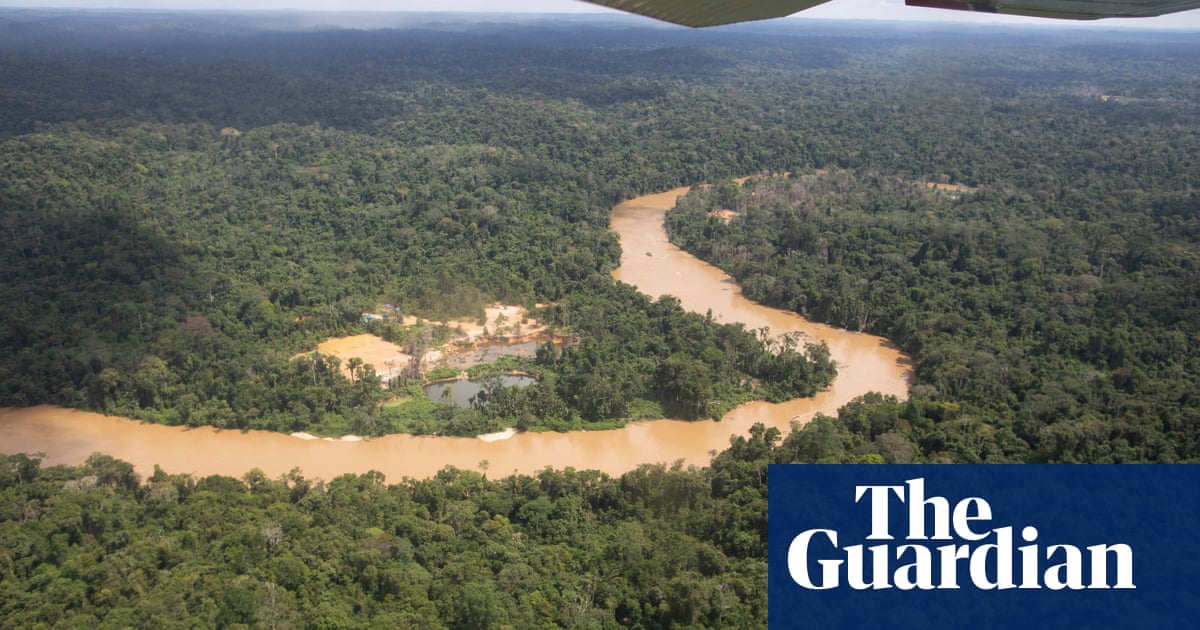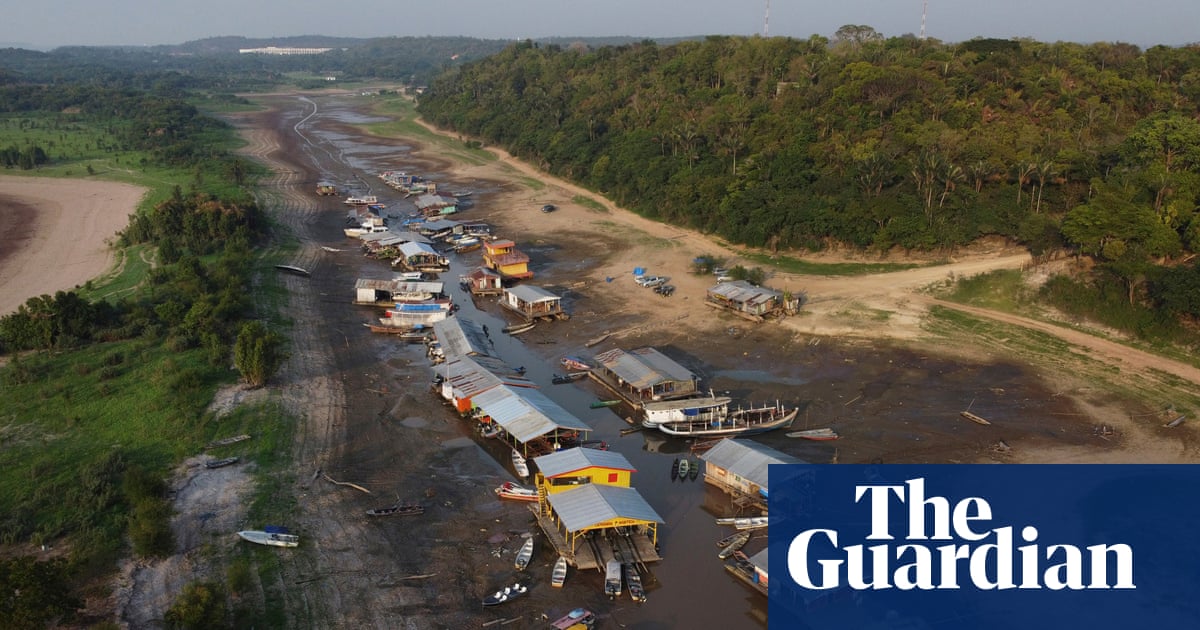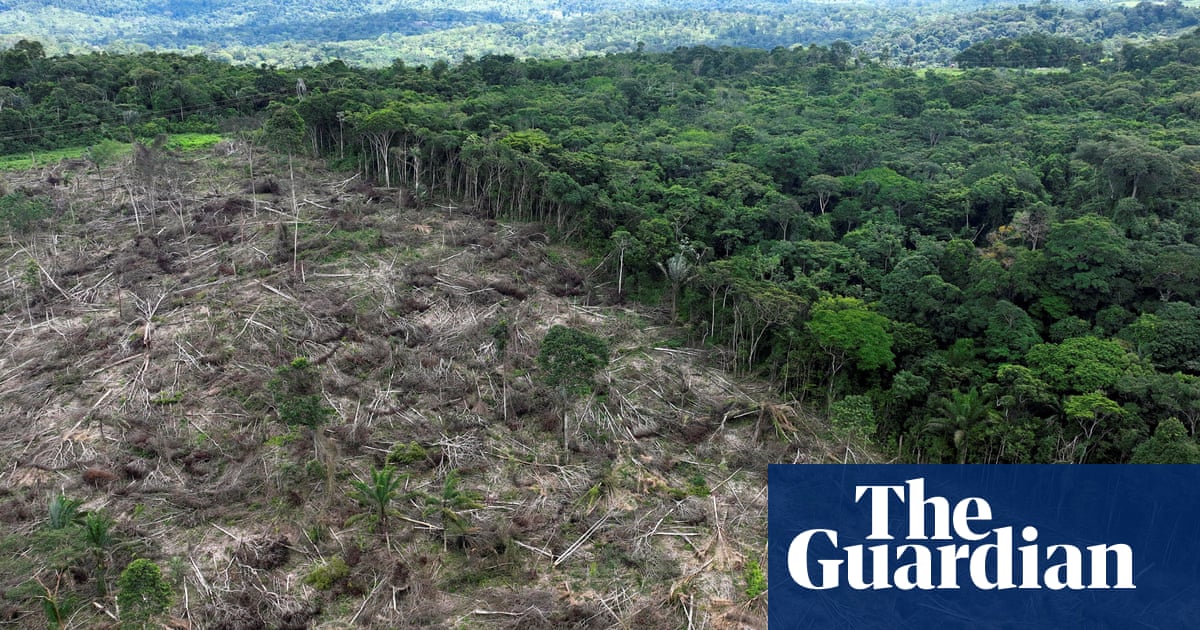
The Amazon is approaching a tipping point, data shows, after which the rainforest would be lost with “profound” implications for the global climate and biodiversity.
Computer models have previously indicated a mass dieback of the Amazon is possible but the new analysis is based on real-world satellite observations over the past three decades.
Novel statistical analysis shows that more than 75% of the untouched forest has lost stability since the early 2000s, meaning it takes longer to recover after droughts and wildfires.
The greatest loss of stability is in areas closer to farms, roads and urban areas and in regions that are becoming drier, suggesting that forest destruction and global heating are the cause. These factors “may already have pushed the Amazon close to a critical threshold of rainforest dieback”, the scientists conclude.
The study does not enable a prediction of when the tipping point could be reached. But the researchers warned that by the time the triggering of the tipping point could be detected, it would be too late to stop it.
Once triggered, the rainforest would transform to grassland over a few decades at most, releasing huge amounts of carbon and accelerating global heating further.
Tipping points on a planetary scale are among the greatest fears of climate scientists, as they are irreversible on human timescales. In 2021, the same statistical technique revealed warning signs of the collapse of the Gulf Stream and other key Atlantic currents, with “an almost complete loss of stability over the last century”.
A shutdown of these currents would have catastrophic consequences around the world, disrupting monsoon rains and endangering Antarctic ice sheets.
Another recent study showed that a significant part of the Greenland ice sheet is on the brink of a tipping point, which would lead to 7 metres of sea level rise over time.
“Many researchers have theorised that an Amazon tipping point could be reached, but our study provides vital empirical evidence that we are approaching that threshold,” said Prof Niklas Boers, at the Technical University of Munich in Germany.
“Seeing such a resilience loss in observations is worrying. The Amazon rainforest stores huge amounts of carbon that could be released in the case of even partial dieback.”
The scientists said Amazon dieback had “profound implications at a global scale”. Boers added: “The Amazon is definitely one of the fastest of these tipping elements in the climate system.”
The research, published in the journal Nature Climate Change, examined satellite data on the amount of vegetation in more than 6,000 grid cells across the untouched Amazon from 1991 to 2016.
They found that in the past 20 years areas impacted by droughts or fires took significantly longer to recover than before. This is a key sign of increasing instability because it shows the processes of restoration are getting weaker.
Drier areas of the forest lost more stability than wetter ones. “This is alarming, as the IPCC [Intergovernmental Panel on Climate Change] models project an overall drying of the Amazon region in response to global warming,” Boers said.
Areas closer to human destruction of the forest also became more unstable. Trees are crucial in producing rain, so felling them to clear land for beef and soy production creates a vicious circle of drier conditions and more tree loss.
Another study in 2021, based on data from hundreds of small plane flights, showed the Amazon now emits more carbon dioxide than it absorbs, mostly because of fires.
But Boers said the data indicated that the tipping point has not yet been crossed: “So there’s hope.” Prof Tim Lenton at Exeter University in the UK, a co-author of the study, said: “It supports efforts to reverse deforestation and degradation of the Amazon to give it back some resilience against ongoing climate change.”
Chris Jones, at the Met Office Hadley Centre in the UK, and not part of the study team, said: “This research adds compelling evidence that climate change is a risk now, and that these severe and irreversible impacts could become a reality. We have a narrow window of opportunity to take urgent action.
“The worrying conclusion [of the study] fits with other recent research on increased tree mortality, increased fires, and reduced regional carbon sinks. The IPCC report out last week assessed that risks of large scale singular events, such as Amazon dieback, are now closer than ever.”
Bernardo Flores, at the Federal University of Santa Catarina in Brazil, said: “The study shows that although the forest may seem fine, with its normal structure and biodiversity, internal processes are already changing, silently, reducing the system’s capacity to persist in the long run. The approach used is interesting because it reveals early warning signals of these changes.”
Flores’s research revealed that savannas were expanding at the heart of the Amazon because of wildfires.
The government of Brazil’s president, Jair Bolsonaro, has been harshly criticised for encouraging more deforestation, which soared by 22% in the year to November, the highest level since 2006.
Boers said: “It’s really complicated to say what’s going to be first: reaching a tipping point by [loss of stability] of the natural vegetation system, or just the bulldozers reaching the forest.”












